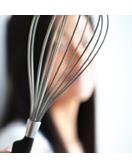I can understand why Rose is so cheong hei because I'm cheong hei too... LOL!
In order to ensure successes in all bakes, Rose has written her recipes with many specific details, along with many alternative steps. For some, she has included principles and rationale explaining how the crucial ingredients or steps works on her recipes or why they don't work. For this reason, I reckon Rose's books are like PhD thesis and can be hard to digest for my everyday baking!!!
Having said that, I really like this basic white sandwich loaf that Rose has written in her book, The Bread Bible or at Epicurious. Using a simplified version of her recipe, I have baked these loaves and we are loving them!!! As promised, they are truly super soft and enriched with milky and buttery flavours.
Why are these breads so soft and delicious? This recipe is good of course! LOL!
- Accordingly to Rose at Epicurious, this recipe uses a greater amount of sponge dough starter which offers a fuller flavours in this plain bread. In this recipe, almost 50% of total of flour flour is used to make the sponge as compared to the usual 30% in other hearth breads.
- In order to develop its fullest flavours, the sponge is ferment for 1 hour at room temperature and then overnight or up to 24 hours in the fridge.
- This recipe contains a high proportion of liquid and a comparable high amount of butter fat and this combination gives the bread a most ideal amount of moisture.
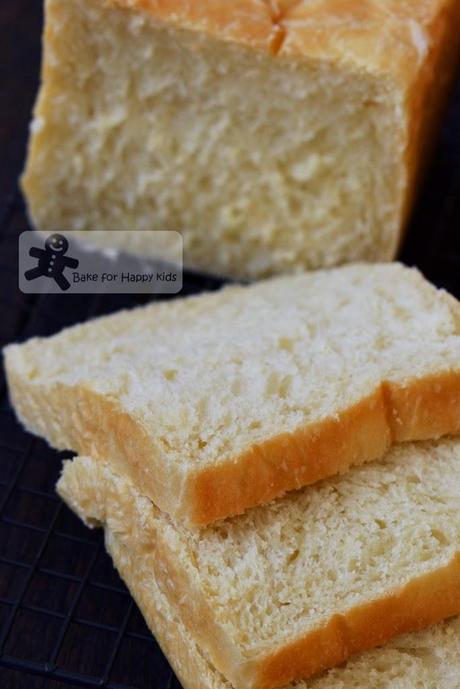
Super soft white sandwich bread
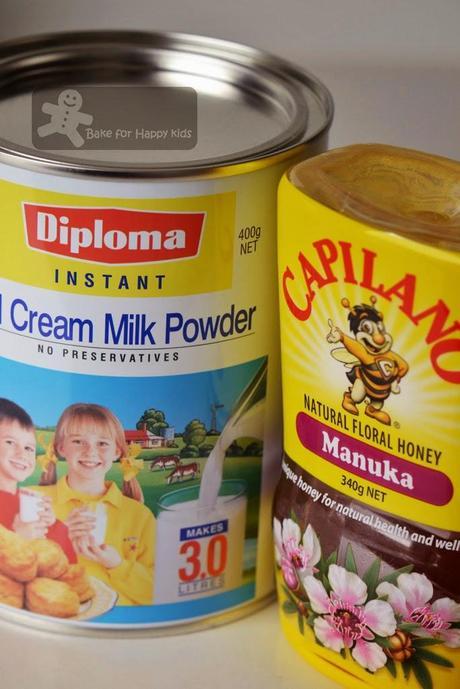
Instead of liquid milk and white sugar, this recipes uses milk powder and honey.
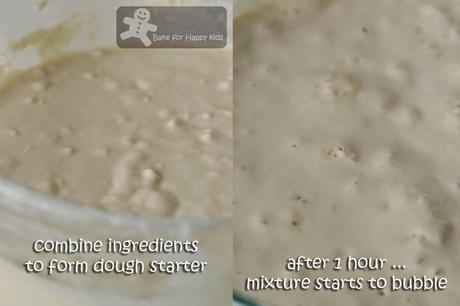
This recipe also uses a dough starter.
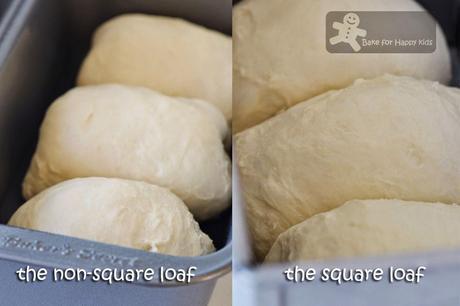
The dough can be slightly sticky but not difficult to handle.
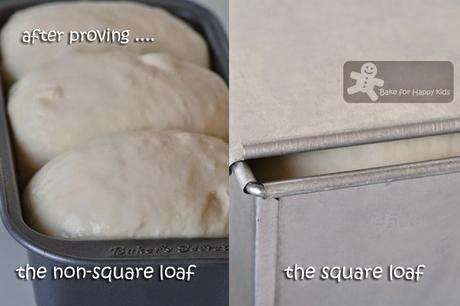
Brush the open loaf with milk or spray with water before baking.
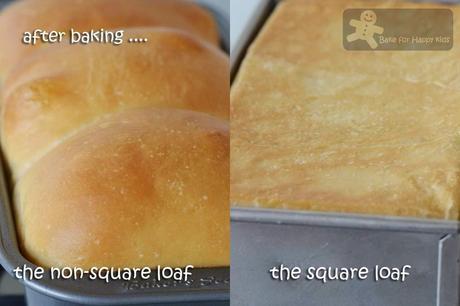
Smell yummy!
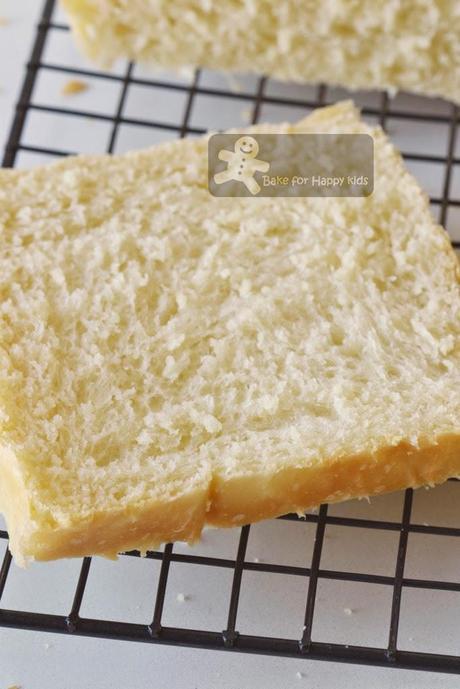
... and taste yummy too!
Here is my simplified version of Rose's basic white bread recipe that is mostly adapted from the book, The Bread Bible or at Epicurious - Please feel free to check Rose's recipe if you need her thorough details.Makes two 8 x 4 x 4 1/2 inch or 10 cm x 20 cm loaves or 450g square loaves
For the dough starter (sponge):
340g unbleached all-purpose flour (I have used 300g bread flour plus 40g Italian OO flour)1 3/4 cup (400ml) water, at room temperature (70° to 90°F)
2 tbsp plus 1 tsp (45g) honey
3/4 tsp instant dried yeast
The rest of the ingredients:
310g unbleached all-purpose flour (I have used 310g bread flour)40g dry milk powder
3/4 tsp instant dried yeast
100g unsalted butter, softened plus extra for greasing
2 1/4 tsp salt
Make the sponge: In a large mixing bowl, combine all ingredients Mix until combined. The sponge will be the consistency of a thick batter. Cover with plastic wrap and leave it to ferment for 1 hr in room temperature and then in the fridge overnight (16 to 24 hrs) until required.
Using a breadmaker with "dough' setting, combine the starter and the rest of the ingredients to form a dough, knead it into a smooth dough and allow it to prove for 1 to 1 1/2 hr or doubled in size.
If breakmaker is unavailable, you can use either an electric mixer fitted with the dough hook or your hand to knead the dough. To start, combine the starter and the rest of the ingredients to form a dough. With the mixer running on low speed or kneading by hand, knead dough until is smooth, stretchy and elastic and this kneading process should take about 10-20 mins. Shape the dough into a smooth round ball and place it a large lightly oiled bowl and cover with plastic wrap allow it to prove for 1 to 1 1/2 hr or doubled in size.
To shape:
Grease loaf pans with thin layers of butter or oil spray. Transfer dough out onto a non-stick or lightly floured surface and cut it in half- I like to resist the use of any extra flour in order to preserve the high proportion of liquid in this dough.Begin by gently pressing the dough into a wide rectangle. Fold over the right side of the dough to the center. Fold over the left side of the dough to overlap it slightly. Press the center overlap section with the side of your hand to seal the dough. Starting at the top edge of the dough, roll it over three or four times, until it reaches the bottom edge of the dough: with each roll, press with your thumbs to seal it and at the same time push it away from you slightly to tighten the outer skin. As you roll and press, the dough will become wider. Starting from the top of the dough, roll it forward until its end and gently stretch it as you roll.
Instead of rolling the dough into one, I have used an alternative shaping method. Further divide the portion of one loaf portion into 3 equal portions and roll and flatten each into long strips. Roll each divided portion of dough into a tight cylinder and pinch the seam closed. Place the dough with its seam side down in the prepared pan.
Repeat shaping method with another loaf. Cover both loaves loosely with plastic wrap, and let them rise in a warm place for 1-2 hrs or until nearly doubled in size.
Preheat the oven to 350°F or 160°C fan forced.
Rose's recipe uses hot baking stone or hot baking sheet with 1/2 cup of ice cubes to bake her bread but I didn't. You can either spray the dough with mist of water or brush the dough with milk just before baking.
Bake for 40 to 50 mins or until medium golden brown, rotating the loaf halfway through baking - I baked mine for 35 mins because this is always the optimal timing for me to bake a typical 450g loaf. Remove loaf from the pan immediately and transfer it onto a wire rack to cool completely before slicing and serving.
Some tips from Rose:
If dry milk powder is not available, replace 1 cup of water with 1 cup milk, preferably non fat. The milk has to be scalded (brought to the boiling point) and cooled to lukewarm. Liquid milk has to be scalded to deactivate the enzyme in it which can make the dough sticky.
Baking the bread at too high a temperature, would result in forming thin crust, which would cause key-holing, or caving in at the sides of the loaf. Therefore, this bread is baked at 350°F. It is also important for the bread to be thoroughly baked so that the crust is firm enough to prevent it from compressing. The loaves should not be cut until completely cool for the same reason.
Happy Baking
This post is linked to the event, My Treasure Recipes #2 - Dough Starter Breads (Aug / Sep 2014) organised by Miss B from Everybody eats well in Flanders and Charmaine from Mimi Bakery House.